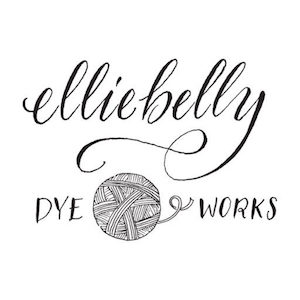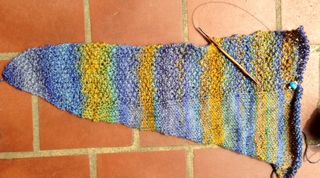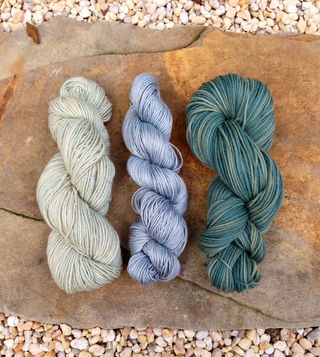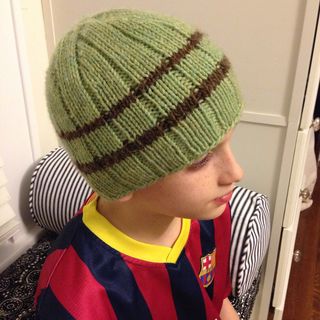My Mom has been a huge fan of the Outlander books for at least a decade. I have to confess that I've feigned polite interest, but the plot has never grabbed me enough to convince me to read it.
One word suddenly changed that: Handknit.
Or rather, it didn't convince me to read the books, but instead, to watch the show, because I was told the knitting was beautiful. And it really is! Claire's ubiquitous and stunning cowl is something I had to knit for my Mom, also named Claire, right away. After searching through the available patterns (clearly, it's just a big ring of garter stitch, but I wanted ideas — should it be a mobius, should there be shaping, etc. etc.) I settled upon The Gathering as a good place to start and cast on.
The lovely purple edge is this provisional cast on, which I prefer to the one the pattern suggests. The yarn is Elliebelly Bulky Merino, held triple stranded to give it the necessary bulk. Although the pattern calls for size 50 needles, I didn't have any on hand, so I'm trying it with my size 35 needles, the largest I own. I'm not sure it will give the loose drapey knit of Claire's cowl on the show, but it seemed worth a try.
My plan is to knit until I am just about out of yarn and then use a three needle bind off, rather than Kitchnering, because I'm lazy like that.
This pattern is the easiest possible knit, and seeing how nice it looks now, part way done, I'm pretty sure the biggest challenge will be giving it over to my Mom when it's done.



